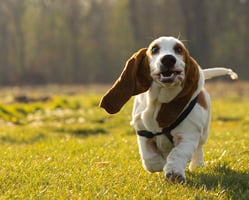Chewing is one of the most common issues that dog owners face. It can be a nuisance, as well as...
How to Get a Dog to Stop Chewing: A Comprehensive Guide
Chewed up shoes, furniture, and other items can be a common problem for dog owners. Fortunately, there are several steps that can be taken to help get a dog to stop chewing. This guide will provide a comprehensive overview of how to get a dog to stop chewing and provide steps that can be taken to help prevent it from happening in the future.
Understanding Why Dogs Chew
Before discussing how to get a dog to stop chewing, it’s important to understand why dogs chew in the first place. Dogs may chew for a variety of reasons, including boredom, teething, anxiety, or even just because they like the taste of the item they are chewing. While it can be frustrating when a dog chews something that it shouldn’t, it’s important to remember that it’s a normal behavior for dogs and that there are steps that can be taken to help prevent it.
Provide Appropriate Chew Toys
One of the best ways to get a dog to stop chewing is to provide them with appropriate chew toys. Chew toys are designed to be safe for dogs to chew on and can help satisfy their natural urge to chew. When selecting chew toys for your dog, be sure to choose ones that are the appropriate size for your dog and are made from materials that are safe for your dog to chew on.
It’s also important to periodically inspect your dog’s chew toys for any signs of wear and tear. If a chew toy becomes worn or damaged, it should be replaced immediately to prevent your dog from ingesting any of the pieces. Additionally, it’s a good idea to rotate your dog’s chew toys on a regular basis to keep them from becoming bored.
Redirect Chewing Behavior
When you see your dog chewing on something they shouldn’t, it’s important to redirect their behavior. This can be done by offering them an appropriate chew toy or by redirecting their attention to something else, such as a game or a treat. It’s important to be patient and persistent when redirecting your dog’s behavior. If you give up too quickly, your dog may not understand that they should not be chewing on that particular item.
Exercise and Mental Stimulation
Providing your dog with plenty of exercise and mental stimulation can also help to reduce chewing. Regular exercise and playtime can help to keep your dog’s energy levels in check, which can reduce their urge to chew. Additionally, providing your dog with mental stimulation in the form of puzzles or interactive toys can help to keep them occupied and reduce their urge to chew.
Discourage Chewing with Positive Reinforcement
Positive reinforcement is another effective way to get a dog to stop chewing. Whenever you see your dog chewing on something they shouldn’t, it’s important to redirect their attention and then reward them with praise or a treat for not chewing. This can help to reinforce the desired behavior and can help to discourage future chewing.
Discourage Chewing with Negative Reinforcement
In some cases, it may be necessary to use negative reinforcement to get a dog to stop chewing. This can be done by using a loud noise or a spray bottle filled with water to startle your dog and discourage them from chewing. It’s important to use this technique sparingly and only as a last resort. Additionally, it’s important to avoid using physical punishment as this can have a negative impact on your dog’s behavior.
Conclusion
Chewing can be a frustrating problem for dog owners, but it is a behavior that can be managed. By providing your dog with appropriate chew toys, redirecting their behavior, and providing them with plenty of exercise and mental stimulation, you can help to reduce their urge to chew and help to get a dog to stop chewing.
It’s also important to remember that dogs may chew for a variety of reasons and that it’s important to be patient and consistent when trying to get a dog to stop chewing. With patience and consistency, you can help to reduce your dog’s urge to chew and help to create a safe and happy environment for both you and your furry friend.



